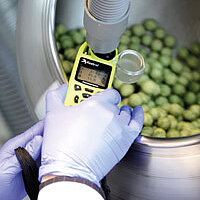Freudenberg Material EXpertise
One of Freudenberg's unique core elements is our material expertise.
Over the years, we have developed numerous high-performing and technically demanding materials to meet customer requirements. These outstanding materials are the basis of our technologies and products across all business groups. The pictures and animations shown are AI-enhanced illustrations of microscopic images of materials developed by Freudenberg.

AI-enhanced illustrations/animations based on microscopic images of materials created by Freudenberg.
Innovation Insights
Life is full of Freudenberg
Our solutions keep the indoor air cleaner, enable safer and more efficient travel, and accelerate healing processes. With our long-standing expertise in materials, systems, and technologies, as well as the know-how of experts in about 60 countries worldwide, we develop leading products, excellent services, and groundbreaking solutions. These include seals, vibration-control components, technical textiles, filters, special chemicals, medical technology products, highly advanced cleaning products, and electric mobility solutions.
Our employees’ expertise is essential to the development of cutting-edge products, services, and solutions that are used in thousands of applications and approximately 40 market segments. Globally, customers benefit from the valuable contributions that our products make to their success. These products include vibration control components, technical textiles, filters, cleaning technologies, special chemicals, medical technology products, batteries, and fuel cells.
Our fields of innovation

Forging the Future
The future arrives when we succeed in exciting people about new possibilities. Designing forward-looking products requires precise analyses and the courage to let technology and the creativity interact. We are moving to the places where the future of Freudenberg is being forged.

















